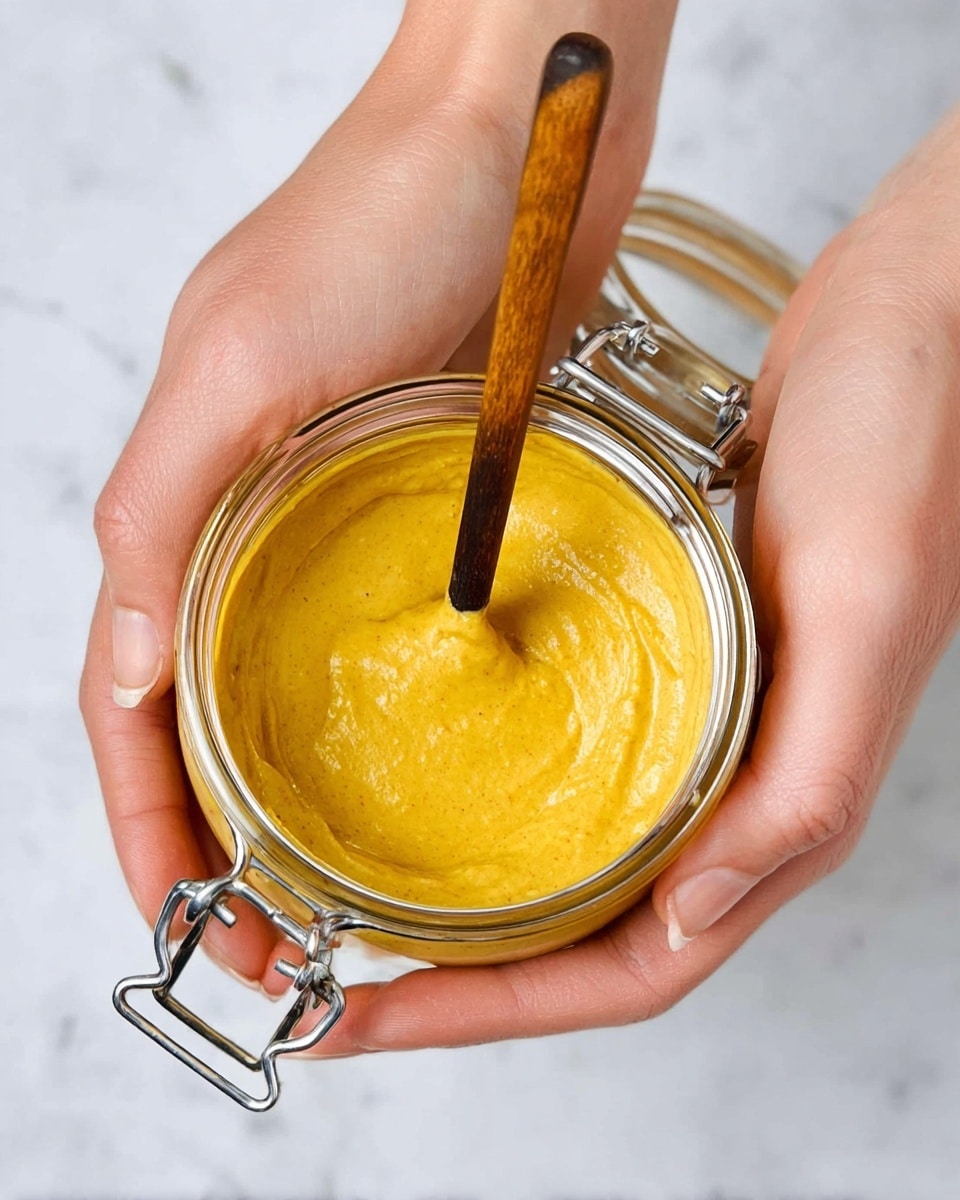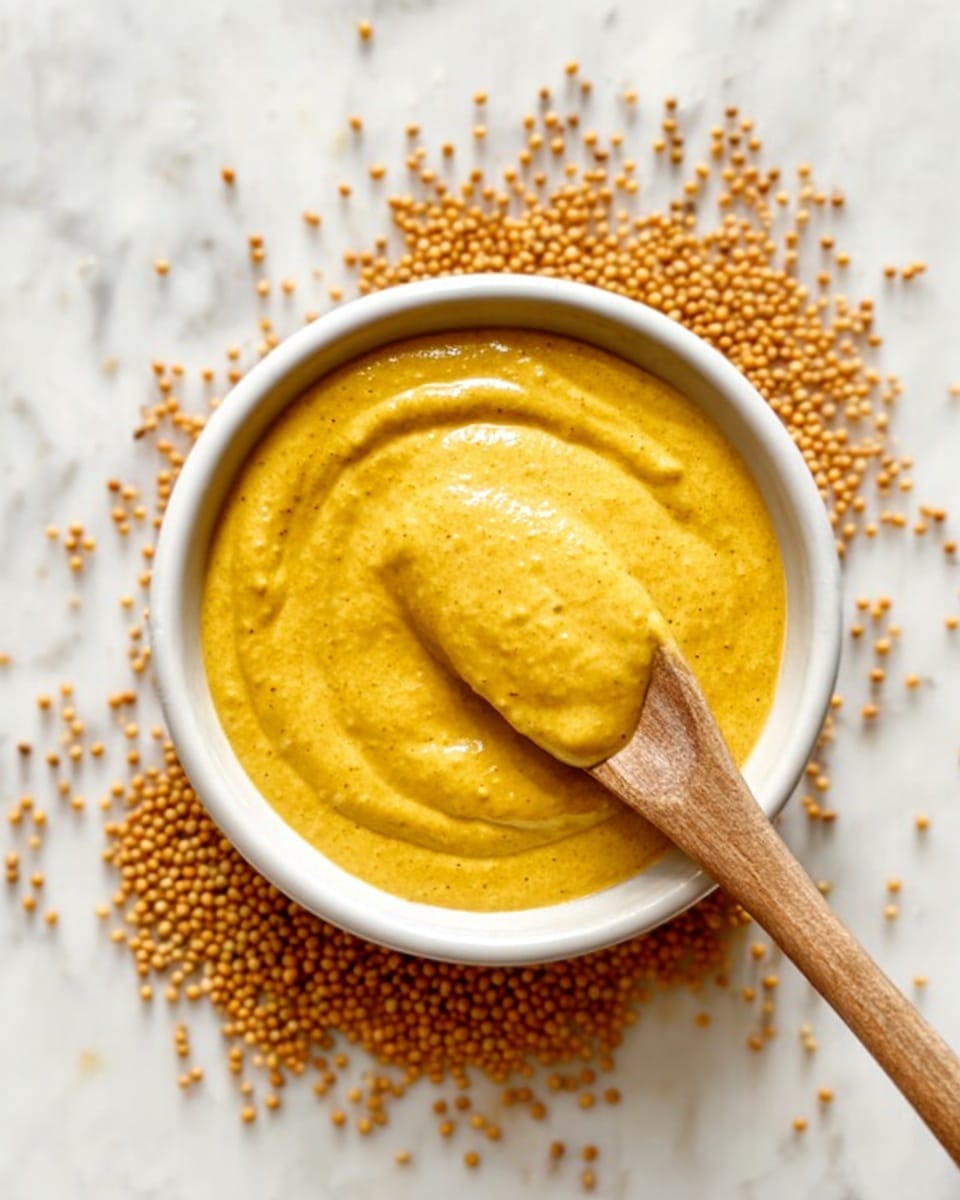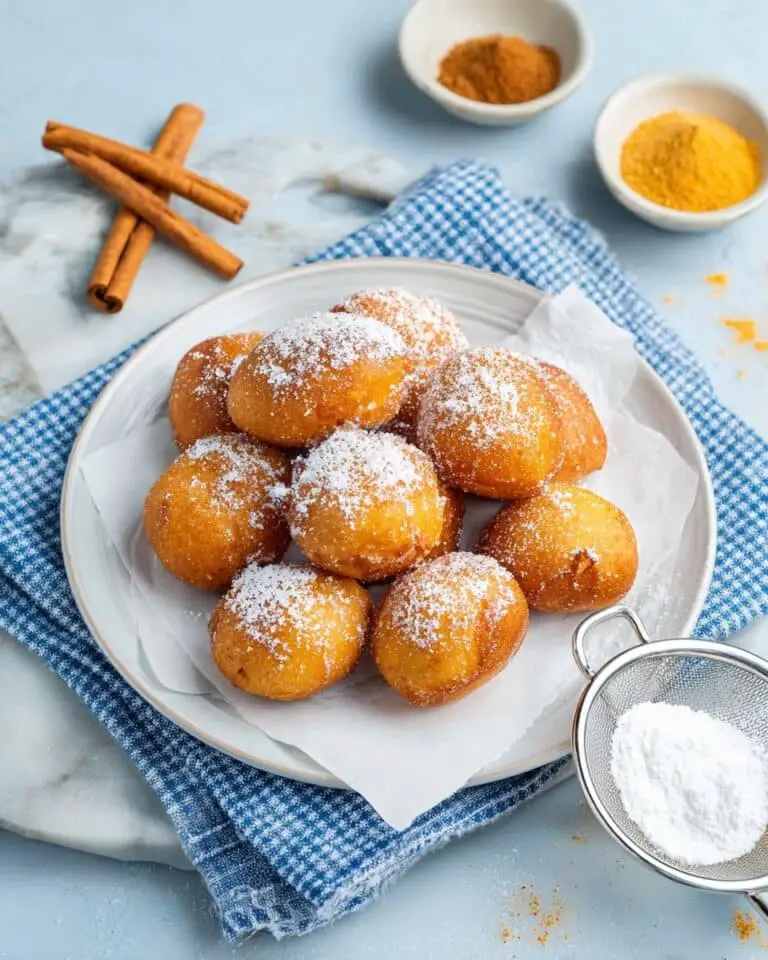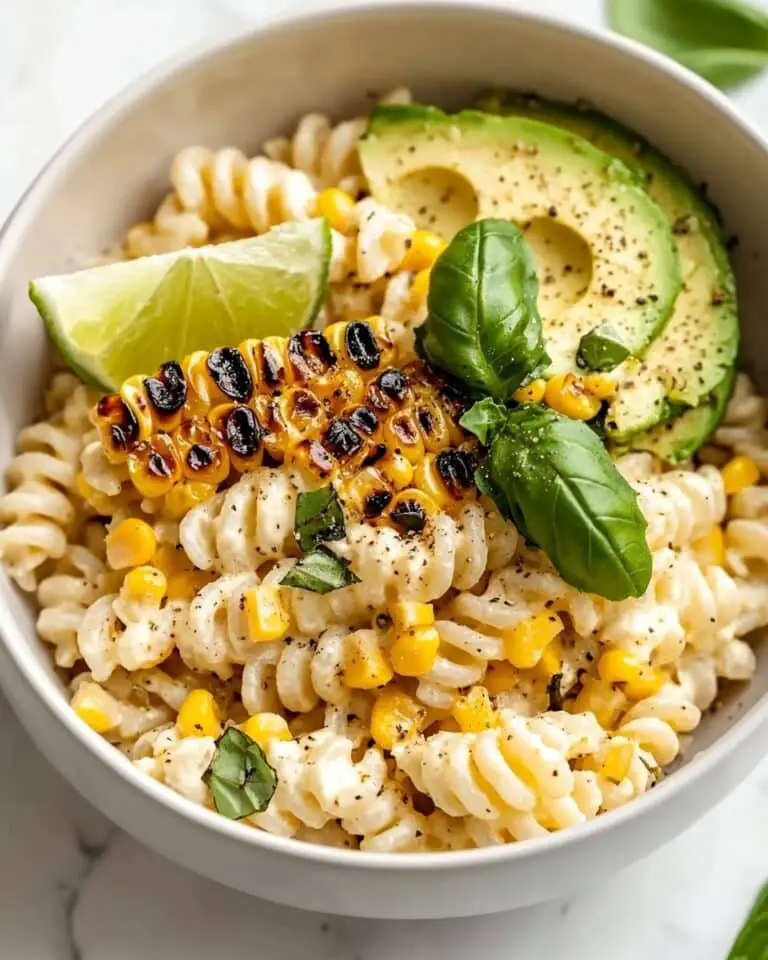If you’re anything like me, you love having that perfect tangy condiment on hand that instantly jazzes up sandwiches, marinades, or even salad dressings. Well, let me share my favorite Simple Homemade Mustard Recipe with you—it’s smooth, vibrant, and way better than anything you’ll find in a store. I absolutely love how this comes together with just a few natural ingredients, and once you make it yourself, I’m confident you’ll agree that the flavor and freshness are unbeatable.
Why You’ll Love This Recipe
- Simplicity at Its Best: You only need a handful of ingredients and under an hour to make your own mustard from scratch.
- Customizable Flavor: Easily tweak the spices or sweetness to match your personal taste buds.
- No Preservatives or Additives: It’s fresh, natural, and tastes way cleaner than store-bought versions.
- Versatile Companion: I use it on everything from grilled meats to dressings, and my family goes crazy for it every time.
Ingredients You’ll Need
These ingredients come together beautifully to create a mustard that’s smooth with just the right kick and hint of sweetness. I like to use filtered water to keep the flavors clean and vibrant, and apple cider vinegar for a touch of tang.
- Yellow mustard seeds: The star of the show—fresh seeds will give your mustard that signature bite.
- Filtered water: Using clean water ensures no off-flavors sneak into your mustard.
- Apple cider vinegar or distilled wine vinegar: Adds brightness and preserves the mustard’s tangy flavor.
- Salt: Enhances all those natural flavors without overpowering.
- Ground turmeric powder: For that beautiful golden color and subtle earthiness.
- Red paprika: Just a pinch for gentle warmth and color depth.
- Garlic powder: Gives a mellow savory note without overwhelming.
- Onion powder: Adds background sweetness and depth.
- Ground cinnamon powder: A surprising hint of warmth balancing the sharpness.
- Honey: The perfect touch of natural sweetness that rounds out the flavor.
Variations
One of the things I love most about this Simple Homemade Mustard Recipe is how easy it is to make it your own. Play around with the spices, or even swap the honey for maple syrup if you want to make it vegan-friendly—trust me, it still turns out fantastic.
- Spicy Kick Variation: I like to add a bit of cayenne pepper when I’m craving a little extra heat—just a pinch goes a long way and wakes up the palate.
- Sweet & Mild Version: For the kids or milder taste, simply increase the honey slightly and skip the paprika; it mellows the bite beautifully.
- Herby Twist: Fresh chopped tarragon or dill stirred in at the end adds a nice herbal freshness that pairs well with fish or chicken.
- Mustard Seed Texture: I sometimes pulse about half the mustard seeds just to coarsely grind them for a grainier texture I personally love.
How to Make Simple Homemade Mustard Recipe
Step 1: Prepare Your Tools and Mustard Seeds
First, I can’t stress enough how important it is to sterilize all your mixing bowls, spoons, and jars with boiling water. Also, avoid aluminum or copper utensils—they can react with mustard and make the flavor metallic. Glass, ceramic, or wooden tools are your best bet. Then, grind your mustard seeds until fine using a spice grinder or a food processor; if you want it a bit chunkier, just pulse them lightly. Pro tip: The finer the powder, the smoother your mustard will be.
Step 2: Combine Spices and Simmer
Once your mustard seeds are ready, mix them with turmeric, paprika, garlic powder, onion powder, cinnamon, and salt in a saucepan. Add the filtered water, but hold off on the vinegar for now. Place the pan on low heat and let everything simmer gently for about 45 minutes. During this time, keep an eye on it and stir occasionally to prevent sticking. It will start bubbling, which means those flavors are coming alive!
Step 3: Add Vinegar and Sweeten the Mix
Now, stir in your apple cider vinegar and let it bubble gently for another 5 to 10 minutes. This step helps balance out the bitterness that fresh mustard seeds naturally have. Finally, stir in the honey to add a lovely hint of sweetness. Pour the mustard into a clean glass jar and let it cool completely at room temperature before sealing.
Step 4: Chill for Flavor Perfection
Here’s something I discovered after a few batches: fresh mustard is quite bitter right out of the jar. You’ll want to give it at least 24 hours in the fridge for the flavors to mellow and blend beautifully. Sometimes, I even wait a bit longer for the best taste. Trust me, the patience pays off and you’ll be rewarded with insanely good mustard.
Pro Tips for Making Simple Homemade Mustard Recipe
- Grind for Texture: Don’t hesitate to experiment with how finely you grind the seeds to find your favorite mustard texture.
- Low and Slow: Cooking your mustard slowly preserves its complex flavors and prevents burning the spices.
- Avoid Metal Reactions: Using non-reactive tools makes a noticeable difference in your mustard’s pure taste.
- Patience Is Key: Waiting at least a day lets the acidity and spice tones balance perfectly—don’t rush this step!
How to Serve Simple Homemade Mustard Recipe
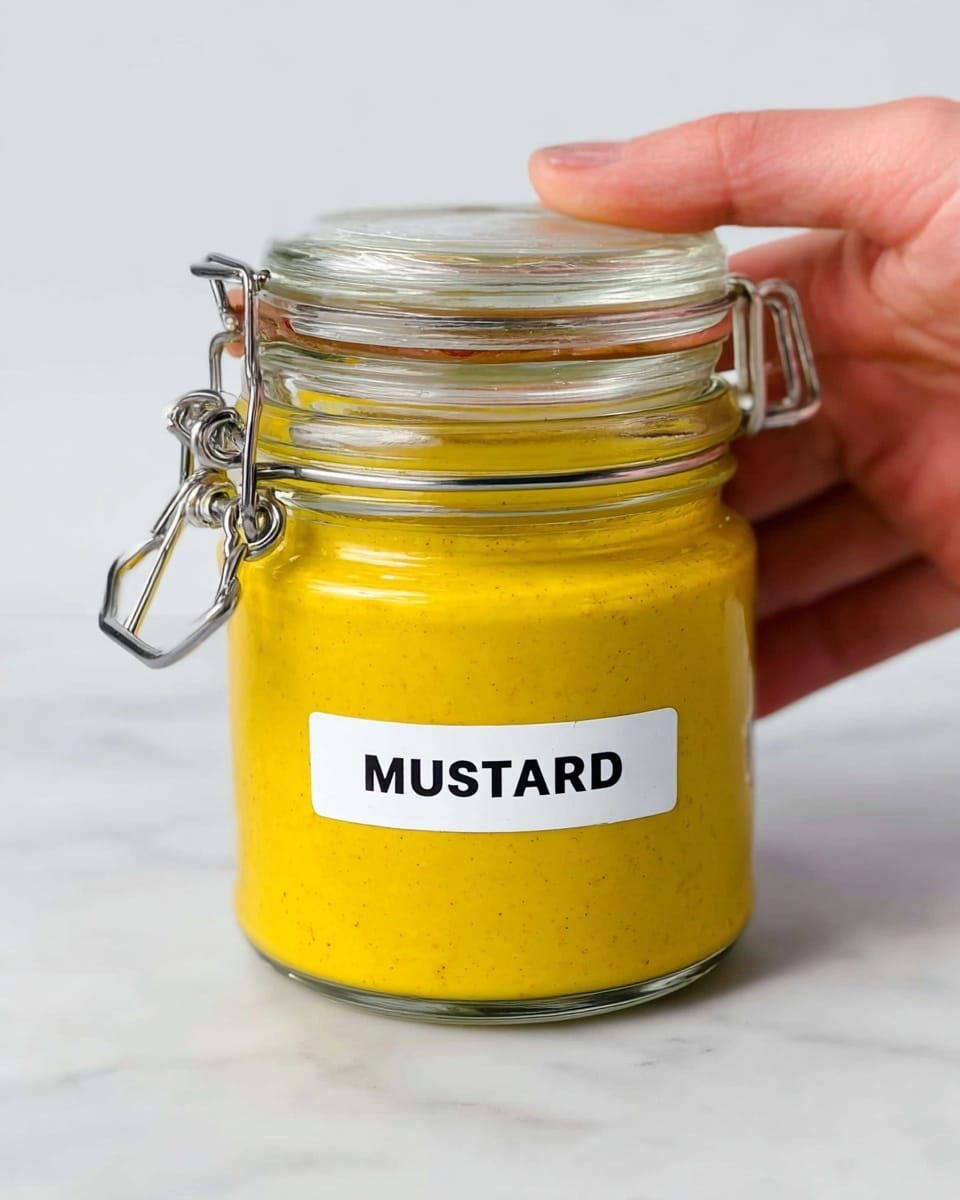
Garnishes
I love topping my mustard with a sprinkle of finely chopped fresh herbs like parsley or chives when serving it alongside charcuterie boards. For a bit of crunch and visual appeal, some whole mustard seeds or a dusting of smoked paprika on top works wonders too.
Side Dishes
This mustard pairs perfectly with roasted potatoes, grilled sausages, and even drizzled over roasted vegetables. I often use it as a dip with soft pretzels for a cozy snack that my family always asks for.
Creative Ways to Present
For special occasions, I like to serve this mustard in little glass ramekins placed within wooden boards alongside cheeses, nuts, and cured meats. It instantly elevates a casual gathering and makes everyone feel like they’re indulging in something homemade and special.
Make Ahead and Storage
Storing Leftovers
After cooling completely, I store my Simple Homemade Mustard in an airtight glass jar in the fridge. It keeps beautifully for up to three months, and its flavor even deepens over time. Just make sure to always use a clean spoon to avoid contamination.
Freezing
I haven’t personally frozen mustard because it holds so well refrigerated, but if you want to store large batches, freezing in small portions might be an option. Just be aware it may change the texture slightly once thawed.
Reheating
There’s usually no need to reheat this mustard as it’s best served cold or at room temperature. If you do want it warmer for recipes, gently heat it on low but avoid boiling to preserve those fresh flavors.
FAQs
-
Can I use black or brown mustard seeds instead of yellow?
Yes! Black and brown mustard seeds have a sharper, more pungent flavor compared to yellow seeds. If you like a bold mustard, feel free to swap or even mix them with yellow seeds—just remember that the flavor intensity will increase.
-
How long does homemade mustard last?
Stored properly in a sealed jar in the refrigerator, your homemade mustard will stay fresh and delicious for about 3 months. Over time, the flavors will develop even more depth, so it’s a win-win!
-
Why does the mustard taste bitter when freshly made?
Fresh mustard can taste bitter due to the natural compounds in mustard seeds. This bitterness mellows out after at least 24 hours of refrigeration, so be patient and you’ll be rewarded with a perfectly balanced flavor.
-
Can I make this mustard sweeter or less spicy?
Absolutely! Adjust the amount of honey to sweeten it more, or reduce paprika and spices if you want it milder. This recipe is quite forgiving and easy to tweak for your preferred taste.
Final Thoughts
This Simple Homemade Mustard Recipe truly holds a special place in my kitchen—it’s comforting knowing exactly what goes into it and that I can whip up a batch whenever I want that fresh mustard punch. It’s not just about flavor but the ritual of blending, simmering, and patiently waiting for the perfect taste to develop. So if you’re up for a fun little kitchen project that brings serious deliciousness, I can’t recommend making your own mustard enough. Give it a try; your taste buds will thank you!
Print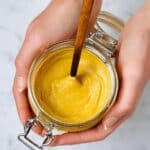
Simple Homemade Mustard Recipe
- Prep Time: 5 minutes
- Cook Time: 50 minutes
- Total Time: 1500 minutes
- Yield: 1 cup
- Category: Condiment
- Method: Stovetop
- Cuisine: American
Description
This simple smooth homemade mustard recipe combines yellow mustard seeds with a blend of spices, vinegar, and honey to create a flavorful condiment that is easy to prepare and perfect for enhancing sandwiches, dressings, and sauces. The mustard is gently cooked over low heat and allowed to mellow in the refrigerator, resulting in a smooth, tangy mustard with a balanced bite.
Ingredients
Mustard Base
- 3/4 cup yellow mustard seeds
- 1.5 cups filtered water
- 1/4 cup apple cider vinegar or distilled wine vinegar
Spices and Flavorings
- 1/2 tsp salt
- 1/4 tsp ground turmeric powder
- 1/4 tsp red paprika
- 1/8 tsp garlic powder
- 1/8 tsp onion powder
- 1/9 tsp ground cinnamon powder
- 1 tbsp honey
Instructions
- Sterilize Tools: Begin by sterilizing all your tools in boiling water, avoiding aluminum or copper utensils, as these can alter the mustard’s flavor. Use glass, ceramic, or wooden implements for best results.
- Grind Mustard Seeds: Powder the yellow mustard seeds using a spice grinder, food processor, or mortar and pestle to your preferred consistency. Finer powder results in smoother mustard, while coarser grind yields a chunkier texture.
- Mix Spices: In a bowl, combine the ground mustard seeds with salt, turmeric, paprika, garlic powder, onion powder, and cinnamon powder, mixing well to blend the spices evenly.
- Cook Spices in Water: Pour the filtered water into a saucepan and add the mixed spices. Cook gently over low heat for about 45 minutes, stirring occasionally, until the mixture begins to bubble.
- Add Vinegar and Cook: Stir in the apple cider or wine vinegar, then let the mixture bubble for another 5 to 10 minutes, ensuring it does not stick to the pan’s bottom by stirring occasionally.
- Cool and Store: Transfer the mustard into a sterilized glass container and allow it to cool completely at room temperature.
- Refrigerate and Mellow: Seal the container tightly and refrigerate for at least 24 hours to let the flavors mellow and develop, reducing initial bitterness. The mustard can be stored refrigerated for up to three months.
Notes
- Stick to glass, ceramic, or wooden utensils to avoid any metallic taste in your mustard.
- The consistency of your mustard depends on how finely you grind the seeds, so adjust to your liking.
- Allowing the mustard to rest in the fridge for at least 24 hours is essential for mellowing the bite and improving flavor.
- Store mustard in an airtight container in the refrigerator for up to three months to maintain freshness.
- Be patient with the cooking process; low and slow heat is key to unlocking the best flavor.
Nutrition
- Serving Size: 1/2 tbsp
- Calories: 10 kcal
- Sugar: 1 g
- Sodium: 101 mg
- Fat: 0.2 g
- Saturated Fat: 0 g
- Unsaturated Fat: 0.2 g
- Trans Fat: 0 g
- Carbohydrates: 1 g
- Fiber: 0.3 g
- Protein: 0.5 g
- Cholesterol: 0 mg

